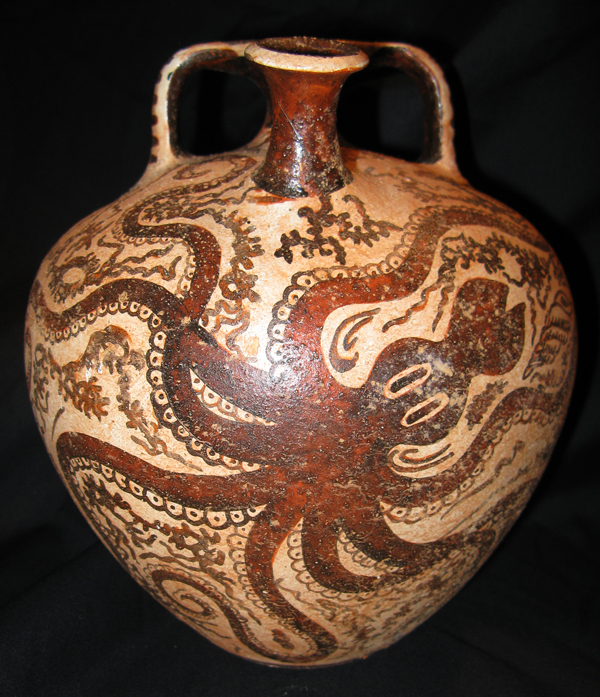Minoan Pottery

Octopus Stirrup Jar
Minoan
replica: from World Treasures, California
date of the original: c. 1500 BC
provenance of the original: Palace of Knossos, Crete; now in the Herakleion Museum, Crete
description:Jar or amphora with false neck. Octopus motif with coral, seaweed and shell fillings. Cream glaze with brown-rust figures. Pottery replica; pottery original. Height 18 cm, diameter 16.5 cm.
Here as in many other similar vessels (see: Bronze Octopus Cup), the octopus swims diagonally, with rocks and shells filling the spaces between the tentacles. The stirrup jug is so-named from its stirrup shaped handles. This particular jug has a false neck--the insertion of an extra spout was to facilitate pouring.
This stirrup jar, with its octopus design, is typical of the Late Minoan period which had reached a high point in foreign expansion and vigorous economic activity. The pottery of this period is characterized by an exuberant joy in nature; the motifs are more naturalistic and there is a greater sense of movement. There is no three-dimensional illusionism; rather the impact of the painting comes from the shapes of the motifs and their relationship to the vessel’s shape and contours. The marine elements, like the octopus (cuttlefish), work well because their shapes are simple, irregular and sinuous, and thus allow a ready transition to two-dimensional form. The marine style is also characterized by the desire to fill every available space with some ornamentation.